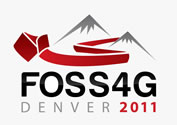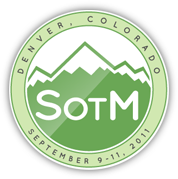Who's Watching your Food: A Case Study for Environmental Health Monitoring
Session Type:
Academic Session
Presenter(s):
Stacy Supak, North Carolina State University
Dr Laura Tateosian
By responding to potentially life-threatening emergencies such as foodborne illnesses and water contamination, U.S. environmental health agencies play a vital role in promoting human health and protecting the environment. Local, state and federal partners must collaborate to strategically plan initiatives, allocate resources, and evaluate emergency response activities. These collaborative decision-making processes can be greatly improved with the implementation of a web-based mapping application for visualization and analysis of human health data.
Using a spatial database management system (PostGreSQL extended with PostGIS), spatial data server (Geoserver) and spatial web API (Geoexplorer), an open source web GIS prototype has been developed for the Division of Environmental Health (DEH) within North Carolina’s Department of Environment and Natural Resources (NCDENR). The application allows users to track and visualize retail food service facilities, inspection status and complaints, as well as other public health issues. We present several usage scenarios: in case a foodborne illness outbreak associated with a large buffet-style establishment occurs, the web map application provides the temporal/spatial query ability to help identify other foodborne illnesses that may be associated with this outbreak; if a city finds fecal coliform contamination in the municipal water supply, a buffered city perimeter can be used to quickly identify DEH-regulated facilities within the affected region; and during food recalls for suspected clostridium botulinum contamination which can lead to severe illnesses, the facilities offering the recalled foods can be spatially identified so that these products can be removed.
The flexibility of the application is an important dimension of its scalability. The application was designed to be a customizable, modular and portable template so that it can easily be configured to support research and education initiatives beyond the environmental health initiative described above. An administrator can configure the functionality and aesthetics for new web mapping applications. This approach of creating a customizable template for wide distribution within a large organization is both practical and economical. For example, an application was configured for the NCDENR Forestry Division to aid forest managers in planning decisions by allowing landowners to provide information about forests on their land by editing polygons representing tree stands. Additional configurations of this application were used in both classroom and graduate research environments, the latter relating to tourism trend evaluation and park location decision-making.
Speaker Bio:
I am a third-year PhD student and Hoffman Fellow in the Department of Parks, Recreation and Tourism Management at North Carolina State University.
Schedule info
Time slot:
Wed, 09/14/2011 - 10:00am - 10:30am
Room:
Spruce 










